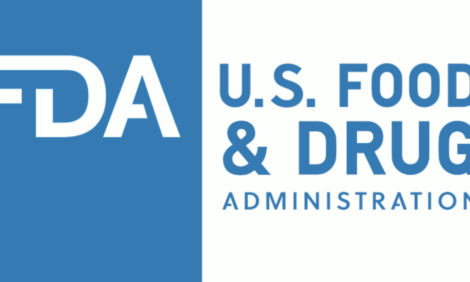



Veterinary Network Should Help Spur Vaccine Development
US - Scientists with the ARS Henry A. Wallace Beltsville (Maryland) Agricultural Research Center (BARC) will join scientists from around the country and the world in a new project that will ultimately accelerate the characterization and treatment of a range of animal diseases.
The project, which was announced Feb. 7, will help researchers develop tools needed to create improved vaccines and tests for animal diseases that threaten agriculture and the food supply.
The U.S. Veterinary Immune Reagent Network is designed to coordinate efforts of the veterinary immunology research community. The USDA is funding the initiative with a $2.15-million grant for a core of 8 research groups with collaborative efforts by more than 40 researchers in USDA, university, institutional, and industry labs. Support for this initiative was generated during the 2004 ARS Animal Immunology workshop hosted by the ARS National Program Leaders for Animal Health, Cyril Gay and Robert Heckert.
The initiative's goal is to develop biological tools, or reagents, that will detect and measure animals' disease responses. These reagents will be used to help diagnose a wide variety of illnesses, improve vaccines, and in some cases function as biotherapeutics to produce changes or serve as prophylactic treatments.
Research is to focus on cattle, poultry, horses, swine, catfish and salmonids including salmon, trout and char.
University of Massachusetts-Amherst veterinary immunologist Cynthia Baldwin will lead the cattle group and serve as principal investigator for the overall project. At BARC's Animal Parasitic Diseases Laboratory, Joan Lunney, an immunogeneticist, will coordinate the network's research on swine, and immunologist Hyun Lillehoj will coordinate its poultry research.
To aid in the development of animal vaccines, compounds and molecules such as antibodies—proteins that seek out antigens of disease-causing bacteria and viruses and help destroy them—will be developed into diagnostic and research reagents.
Desired reagents include monoclonal antibodies (mAb), which are identical because they were produced by one type of immune cell and are clones of a single parent cell. Scientists use mAbs to specifically bind to and detect or purify a targeted substance. The antibodies are essential reagents for sandwich ELISAs, an enzyme-based immunoassay method useful for measuring antigen concentrations.
Backers of the U.S. Veterinary Immune Reagent Network hope to develop ELISAs that can specifically detect and quantitate the concentration of soluble cytokine and chemokine proteins. Cells in the immune system communicate with each other through hormonelike proteins called cytokines. Cytokines are secreted by cells for each type of response and can suppress the activity of the other. Chemokines are secreted proteins that help recruit various subsets of leukocytes to areas of tissue damage to guide specific immunological responses.
Lunney, Lillehoj and other coordinators have surveyed colleagues with regard to existing reagents at other labs. They will identify proteins and genes specific to their targeted species and submit cloned genetic material to the central laboratory in Amherst. Many of the reagents developed will be stored in cell banks in the United States and Europe and transferred to commercial vendors for marketing so they'll be accessible to as many researchers as possible. A portion of all reagents will be distributed free of charge to key researchers for each species.
The mission of BARC's Animal Parasitic Diseases Laboratory includes reducing the economic costs associated with parasites and infectious organisms in livestock and poultry and reducing the risk of transmission of animal diseases to humans.
 Lunney says that tools to improve vaccines and identify better adjuvants and biotherapeutics are needed to improve pig health and well-being. Porcine reproductive and respiratory syndrome virus is the biggest threat to swine operations today, its financial impact estimated to exceed $500 million annually. Other respiratory infections, such as Mycoplasma hyopneumoniae, and other bacterial infections result in porcine respiratory disease complex, which leads to decreased feed efficiency, higher cull rates, increased days to market, and increased treatment costs during late-finishing (18-20 weeks) pigs.
Lunney says that tools to improve vaccines and identify better adjuvants and biotherapeutics are needed to improve pig health and well-being. Porcine reproductive and respiratory syndrome virus is the biggest threat to swine operations today, its financial impact estimated to exceed $500 million annually. Other respiratory infections, such as Mycoplasma hyopneumoniae, and other bacterial infections result in porcine respiratory disease complex, which leads to decreased feed efficiency, higher cull rates, increased days to market, and increased treatment costs during late-finishing (18-20 weeks) pigs.
Costs involved in developing new drugs and live vaccines for major poultry diseases — including Marek's disease, respiratory disease, and Infectious Bursal Disease (sometimes called Gumboro) — can be prohibitive. According to Lillehoj, the need to develop novel approaches and alternative control strategies for many poultry diseases is underscored by increased regulations and bans on the use of anticoccidial drugs. Coccidiosis affects birds' ability to absorb nutrients and results in weight loss or death. It alone costs the poultry industry more than $700 million a year.
Each species group has as a goal of producing 20 new reagents over the next 4 years. The U.S. Veterinary Immune Reagent Network will consult with an international advisory board of scientists and industry stakeholders to decide which reagents should receive immediate attention.
Source: USDA Agricultural Research Service - 24th April 2006








